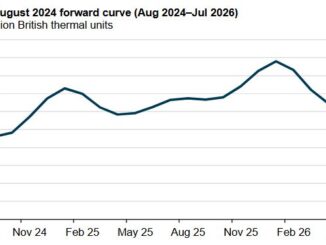
I have always loved the Monty Python skits, and my favorite is Monty Python and the Holly Grail. The line “I’m not dead yet” is still applicable to the United States shale and dare say “Peak Oil Demand”. There is a huge question of how much technology and U.S. grit can overcome the lower rig counts vs. increased production.
Are you from California, New Jersey or New York and need a tax break?
U.S. Oil Output vs. Rig Counts: A Tale of Divergence
Over the past several years, U.S. crude oil production has shown remarkable growth, climbing steadily despite a notable decline in active rig counts. This decoupling highlights how shale operators have prioritized productivity per rig over sheer volume of drilling. According to data from the U.S. Energy Information Administration (EIA), average annual U.S. crude oil production has increased from approximately 11.3 million barrels per day (bpd) in 2020 to 13.2 million bpd in 2024, with 2025 figures holding steady around 13.3 million bpd so far.
In contrast, oil rig counts, as reported by Baker Hughes, have trended downward after peaking in the post-pandemic recovery. The average oil rig count fell from around 620 in 2023 to about 500 in 2024, and further to roughly 410-480 in 2025.
To illustrate this trend, consider the following table of yearly averages:
|
Year
|
Average Crude Oil Production (thousand bpd)
|
Approximate Average Oil Rig Count
|
|---|---|---|
|
2020
|
11,329
|
~430
|
|
2021
|
11,298
|
~350
|
|
2022
|
11,990
|
~550
|
|
2023
|
12,932
|
~620
|
|
2024
|
13,208
|
~500
|
|
2025 (YTD)
|
~13,300
|
~450
|
Sources: EIA for production; Baker Hughes and industry estimates for rig counts.
This divergence began prominently in 2023, when production hit record highs even as rig counts started to soften due to lower oil prices and a focus on capital discipline. By mid-2025, rig counts have dropped by about 20-30% from their 2023 peaks, yet output has remained resilient, growing modestly year-over-year.
The EIA has repeatedly revised its forecasts upward, acknowledging that initial predictions of decline underestimated the sector’s adaptability.
The Resilience of U.S. Shale Producers
U.S. shale producers have demonstrated extraordinary resilience, weathering cycles of boom and bust through strategic shifts. After the 2020 COVID-induced crash, which saw production plummet to below 10 million bpd in May, operators emerged leaner, focusing on high-grading assets and debt reduction rather than aggressive expansion.
This discipline paid off as prices rebounded, allowing companies to generate record free cash flow and return value to shareholders.Key to this resilience is the industry’s ability to adapt to external pressures, including fluctuating oil prices, regulatory changes, and supply chain disruptions. For instance, despite tariffs and construction cost hikes in 2025, major players like Diamondback Energy have signaled potential for reversed slowdowns if prices recover.
The slowing energy transition and balanced global markets further bolster shale’s position, as demand for oil persists longer than anticipated.
Challenges remain, such as wastewater disposal limits in the Permian Basin, which could constrain growth.
Yet, producers’ track record suggests they will innovate around these hurdles, delaying any true “peak” in shale output.
Lowest Costs for Profitability by Basin
One pillar of shale’s endurance is its improving cost structure. Breakeven prices—the oil price needed to profitably drill and produce—have varied by basin but generally trended lower for existing wells due to efficiencies. For new wells, full-cycle breakevens (including exploration and development costs) range from $56 to $70 per barrel, depending on the basin and operator size.
Recent 2024-2025 data highlights the following approximate breakeven prices for new wells:
|
Basin
|
Breakeven Price (USD per barrel)
|
Notes
|
|---|---|---|
|
Permian Delaware
|
$56-64
|
Lowest cost; high productivity.
|
|
Permian Midland
|
$62-66
|
Slightly higher due to maturity.
|
|
Eagle Ford
|
$66
|
Competitive but variable.
|
|
Bakken
|
$65-70
|
Higher costs from logistics.
|
|
Overall Shale Avg
|
$59-65
|
For large producers, lower for existing wells (~$31
|
These figures assume WTI prices at current levels around $60-65; many basins remain profitable, though margins tighten for new drilling.
Larger operators benefit from scale, achieving breakevens as low as $31 for ongoing production.
Efficiencies Overcoming Reduced Rig Counts
The secret sauce behind shale’s comeback? Efficiency. As detailed in a recent analysis, U.S. shale drillers are achieving a “second wind” through innovations like longer lateral wells, optimized fracking techniques, and faster drilling times.
Companies such as Diamondback Energy exemplify this, drilling wells quickly and cheaply, which sustains output even with fewer rigs.
These gains have directly offset rig reductions. For example, despite a 5% drop in rig counts in 2024 and further declines in 2025, production rose 2% year-over-year in early 2025.
The EIA’s upward revisions reflect this: initial forecasts of a dip to 13.3 million bpd by late 2025 were adjusted after real data showed growth.
While limits to these efficiencies exist—such as physical constraints in basins— they have extended shale’s viability, potentially pushing peak production further into the future.
The Bottom Line
The U.S. shale industry is far from fading; it’s reinventing itself. With production holding strong amid falling rig counts, low breakeven costs in key basins, and efficiency-driven comebacks, shale producers prove their mettle. As global demand evolves and prices fluctuate, expect this resilient sector to continue surprising skeptics. Shale isn’t dead—it’s just getting smarter.
Is Oil & Gas Right for Your Portfolio?
Crude Oil, LNG, Jet Fuel price quote
ENB Top News
ENB
Energy Dashboard
ENB Podcast
ENB Substack






